The Kingdom of Romania, under the rule of King Carol II, was initially a neutral country in World War II. However, Fascist political forces, especially the Iron Guard, rose in popularity and power, urging an alliance with Nazi Germany and its allies. As the military fortunes of Romania's two main guarantors of territorial integrity—France and Britain—crumbled in the Fall of France, the government of Romania turned to Germany in hopes of a similar guarantee, unaware that the then-dominant European power had already granted its blessing to Soviet claims on Romanian territory, in a secret protocol of 1939's Molotov–Ribbentrop Pact.

Dej is a municipality in Transylvania, Romania, 60 kilometres (37 mi) north of Cluj-Napoca, in Cluj County. It lies where the river Someșul Mic meets the river Someșul Mare. The city administers four villages: Ocna Dejului (Désakna), Peștera (Pestes), Pintic (Oláhpéntek) and Șomcutu Mic (Kissomkút).

Avram Iancu was a Transylvanian Romanian lawyer who played an important role in the local chapter of the Austrian Empire Revolutions of 1848–1849. He was especially active in the Țara Moților region and the Apuseni Mountains. The rallying of peasants around him, as well as the allegiance he paid to the Habsburg monarchy, earned him the moniker Crăișorul Munților. He was among the organizers of the 1848–1849 massacres in Transylvania, that happened during the Hungarian Revolution of 1848, during which 7,500–8,500 Hungarians, 4,400–6,000 Romanians, and about 500 Transylvanian Saxons, Armenians, Jews, and members of other groups where killed.
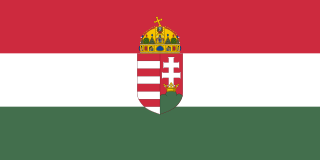
Northern Transylvania was the region of the Kingdom of Romania that during World War II, as a consequence of the August 1940 territorial agreement known as the Second Vienna Award, became part of the Kingdom of Hungary. With an area of 43,104 km2 (16,643 sq mi), the population was largely composed of both ethnic Romanians and Hungarians.

The Second Vienna Award, also known as the Vienna Diktat, was the second of two territorial disputes that were arbitrated by Nazi Germany and Fascist Italy. On 30 August 1940, they assigned the territory of Northern Transylvania, including all of Maramureș and part of Crișana, from Romania to Hungary.
The Treznea massacre occurred in the village of Treznea, Sălaj in north-western Transylvania on 9 September 1940, in the immediate aftermath of the Second Vienna Award, when Romania ceded Northern Transylvania to Hungary. The massacre was perpretated by Hungarian Army troops with aid from some locals; 93 ethnic Romanians and Jews were killed.
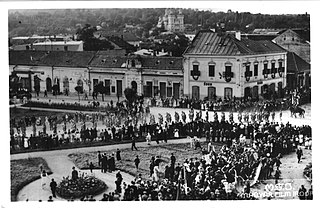
The events of the Ip massacre escalated in the early hours of 14 September 1940, in Ipp,, Northern Transylvania. After two Hungarian soldiers died there in an accidental explosion, rumors spread that they had been killed by Romanians. After another incident the Royal Hungarian Army, influenced by the rumor, indiscriminately massacred around 150 ethnic Romanians in the nearby locations and surrounding areas.

Vasile Ursu Nicola (1731 in Arada, Principality of Transylvania – 28 February 1785 in Karlsburg, commonly known as Horea was a Transylvanian peasant who, with Ion Oarga and Marcu Giurgiu, led the two-month-long peasant rebellion that began in the Metaliferi Mountains villages of Curechiu and Mesteacăn in late 1784 and that was known as the Revolt of Horea, Cloșca and Crișan.

The union of Transylvania with Romania was declared on 1 December [O.S. 18 November] 1918 by the assembly of the delegates of ethnic Romanians held in Alba Iulia. The Great Union Day, celebrated on 1 December, is a national holiday in Romania that celebrates this event. The holiday was established after the Romanian Revolution, and celebrates the unification not only of Transylvania, but also of Bessarabia and Bukovina and parts of Banat, Crișana and Maramureș with the Romanian Kingdom. Bessarabia and Bukovina had joined with the Kingdom of Romania earlier in 1918.

On 1 July 1940, in the town of Dorohoi in Romania, Romanian military units carried out a pogrom against the local Jews, during which, according to an official Romanian report, 53 Jews were murdered, and dozens injured. According to the town's Jews, the number of fatalities was between 165 and 200. These acts were committed before Romania entered World War II, before it became Germany's ally, and before the German military entered the country.

Bățani is a commune in Covasna County, Transylvania, Romania. It lies in the Székely Land, an ethno-cultural region in eastern Transylvania.

Leonard Mociulschi was a Romanian Major General of Polish origin during World War II.

The military history of Romania deals with conflicts spreading over a period of about 2500 years across the territory of modern Romania, the Balkan Peninsula and Eastern Europe and the role of the Romanian military in conflicts and peacekeeping worldwide.

The Hungarian–Romanian War was fought between Hungary and Romania from 13 November 1918 to 3 August 1919. The conflict had a complex background, with often contradictory motivations for the parties involved.
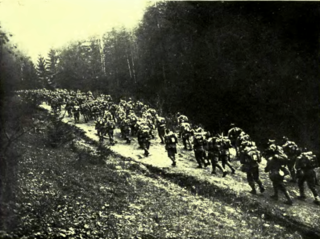
The Battle of Transylvania was the first major operation of Romania during World War I, beginning on 27 August 1916. It started as an attempt by the Romanian Army to seize Transylvania, and potentially knock Austria-Hungary out of the war. Although initially successful, the offensive was brought to a halt after Bulgaria's attack on Dobruja. Coupled with a successful German and Austro-Hungarian counterattack which started in mid-September, the Romanian Army was eventually forced to retreat back to the Carpathians by mid-October. The Romanian armies however managed to escape the Central Powers' attempts to completely destroy them. The Battle of Transylvania also caused the replacement of the Chief of Staff of the German Army and the shifting of German attention to the region, causing German offensive operations at Verdun to cease.
The 1848–1849 massacres in Transylvania were committed in the Hungarian Revolution of 1848. According to Hungarian historian Ákos Egyed, 14,000 to 15,000 people were massacred in Transylvania in this period. The victims comprised 7,500–8,500 Hungarians, 4,400–6,000 Romanians, and about 500 Transylvanian Saxons, Armenians, Jews, and members of other groups.
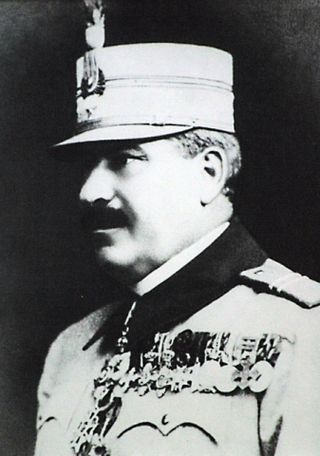
Traian Moșoiu was a Romanian general during World War I and the Hungarian–Romanian War. He held the posts of Minister of War in the Alexandru Vaida-Voevod cabinet, Minister of Communications and of Industry and Commerce in the Ion I. C. Brătianu cabinet.
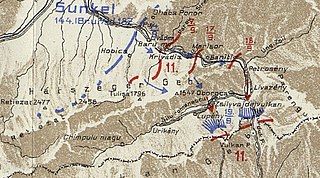
The First Battle of Petrozsény was a military engagement fought between Romanian forces on one side and German forces on the other side. It was part of the 1916 Battle of Transylvania, itself part of the Romanian Campaign of World War I. This was a German attack which drove off the Romanian forces from the Transylvanian coal mining center of Petrozsény. Although a Romanian counterattack a few days later undid most of their gains, the main strategic objective of the Central Powers had been nevertheless achieved.

The Nușfalău massacre occurred in the village of Szilágynagyfalu in Northern Transylvania. It happened on 8 September 1940, when a Hungarian soldier with the support of some natives tortured and killed eleven people of Romanian ethnicity from a nearby village, who were passing through the area.

The territorial evolution of Romania includes all the changes in the country's borders from its formation to the present day. The precedents of Romania as an independent state can be traced back to the 14th century, when the principalities of Moldavia and Wallachia were founded. Wallachia during its history lost several portions of its territory, either to the Ottomans or the Habsburgs. However, this land would be later essentially recovered in its entirety. Moldavia, on the other hand, suffered great territorial losses. In 1774, the Habsburgs invaded Bukovina and annexed it one year later, and in 1812, the Russian Empire took control of Bessarabia. Both territories were later exposed to powerful colonization policies. The principalities declared unification in 1859 as the Principality of Romania. This new state sought independence from the Ottoman Empire's vassalage, and in 1878, it fought a war against it alongside Russia. However, the latter would annex Southern Bessarabia, which was recovered decades before. Romania received Northern Dobruja as compensation, and would wage a war for the southern part against Bulgaria in 1913.
















